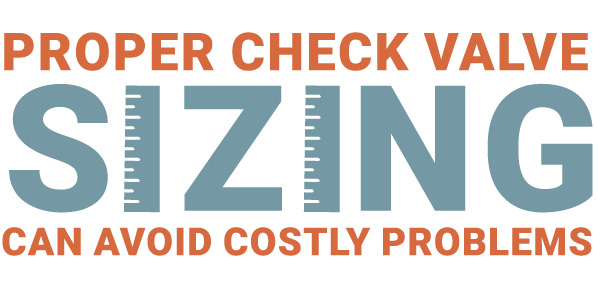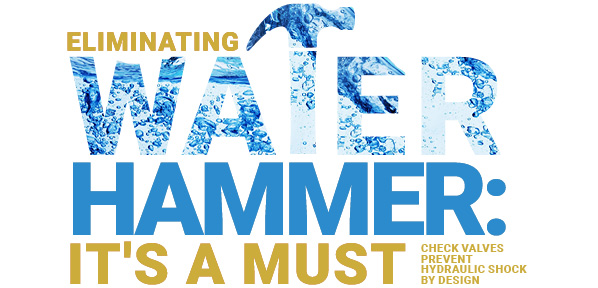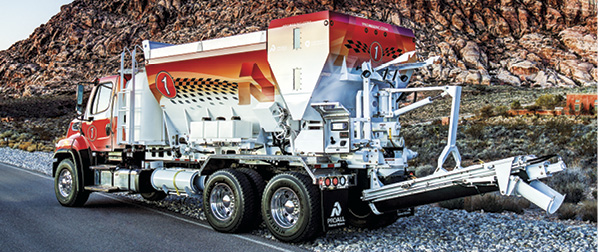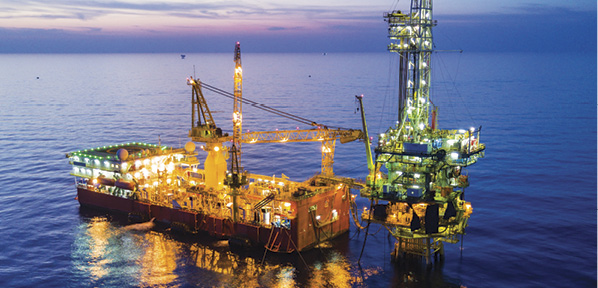Proper Check Valve Sizing Can Avoid Costly Problems

By Sheila Kennedy, CMRP, Additive Communications Managing Director and Brian Strait, Business Development Manager, Check-All Valve Mfg. Co.
It is surprisingly common for check valve sizing to be an afterthought in the flow-control and fluid-process industries. Often marketed together with gate and globe valves, check valves are such a small part of the gate, globe, and check valve market that many engineers in the field don’t even think about their sizing. It is usually check valve failure that prompts engineers to seek technical support. Even then, they may not consider that sizing is the underlying issue.
Check valves serve essential functions. They’re primarily used to prevent the reverse flow of media – liquid, gases, and steam, typically – but can also be used for vacuum breaking, low-pressure relief, line isolation, manifolding, media injection, and many other applications. By allowing flow in one direction only, check valves prevent damaging backflow, and some styles can prevent hydraulic shock, otherwise known as water hammer. (See article page 14.)
There are different items to consider when sizing media-actuated check valves versus other types of flow-control valves that utilize externally actuated methods. Systems operate more effectively and reliably when check valves are properly sized. Correctly sizing valves protects them from preventable problems such as wearing prematurely or breaking apart, which can disrupt processes and cause damage to other equipment and components.
Why oversizing is a problem
Valves that are oversized can experience a significantly shorter lifespan due to premature wear, potentially leading to complete failure. If they come apart, they can damage or destroy more expensive components upstream or downstream – normally downstream of the check valve – resulting in costs that are far greater than a simple valve replacement. A telltale sign of oversizing is when the check mechanism rattles and chatters because it is not opening and closing properly.
Why undersizing is a problem
Undersized check valves can create a choked flow condition, which means a process doesn’t get the flow of media or pressure it needs downstream of the check valve. When the valve is too small, it will interfere with the performance of the intended function.
Because the system can’t operate effectively, it can put more strain and stress on the source of the flow, such as a pump. Furthermore, when a check valve is undersized or the spring is too heavy, the checking mechanism may not perform as desired. Even if the valve size matches the line size, the flow capacity is less than required for the application, causing choked flow. As a result, it will not produce the flow of media needed downstream to accomplish the intended function.
For example, a system requiring 100 gallons per minute of flow and 50 pounds per square inch of pressure to operate effectively may fall short with undersized check valves or improperly selected springs.
Incentives for accuracy
A common adage says the final cost of a valve is much more important than the first cost of a valve. In other words, an inexpensive commodity valve that must be replaced frequently will likely cost more in parts and labor than using a performance check valve made to meet the application needs. Paying a little more for a valve that’s going to last a long time and have few issues will cost much less over time.
Properly sizing check valves improves valve operation, promoting a longer life cycle; minimizes the frequency, costs, and duration of valve maintenance, repair, and replacement; reduces downtime from valve failure and consequential equipment damage or destruction; and enables adequate flow and pressure to operate at optimum performance.
How to get sizing right
Sizing is highly dependent on the type of valve. For most flow-control valves, including gate valves, globe valves, and ball valves, it is simply based on the size of the line. Also, these valve types are manually throttled. With the turn of a handle, a ball or gate valve’s opening mechanism can be manipulated as much as needed to achieve the desired pressure loss or flow coefficient (Cv). Because of this capability, using these valve types with a flow capacity well in excess of what is needed for the application is oftentimes desired.
For example, if a valve Cv of 100 is required for an application to achieve the desired flow and pressure drop of the media, then it is okay to use a valve that is 150 Cv capable if it can be throttled down to 100 Cv by turning the handle. Manually operated valves, such as ball valves, are much less sensitive to varying flow conditions.
On the other hand, a check valve is automatic, whereby it is activated by flow conditions. This makes accurate valve sizing more important. For spring-loaded check valves specifically, proper spring selection is essential for optimum valve performance.
When it comes to spring-loaded check valves, or any sort of check valve that is operated by the media, the media’s function is what opens the valve; no external controls are involved. Whether the media is gas or liquid is important in sizing. With gas sizing, pressures and temperatures must be considered. With liquid sizing, temperature has little effect because it doesn’t affect the compressibility. Pressure cannot compress liquid, but it can compress or expand gas.
The cracking pressure is equal to the minimum pressure differential it takes to initially open the valve. Some additional amount of pressure differential and flow is needed to open a valve fully, but if the spring is too heavy, it will not fully open and ultimately will rattle, chatter, and may wear out prematurely.
With the points we’ve discussed in mind, here are the basic steps to properly size a check valve:
- Determine the line size, media, and temperature of the application.
- Determine the flow and pressure of the system.
- Calculate the required Cv based on the application flow conditions.
- Choose the right spring and valve style and size with proper Cv to make sure the valve operates properly in the system.
Industry-standard sizing formulas are available to assist with the calculations.
It is highly important to make sure the media can fully open and fully close the valve by flow and pressure differential. Normally, you want to get the minimum setting to make sure it opens fully and yet takes as little pressure away as possible. An exception is when an application requires the check valve to hold back a certain amount of pressure to make a pump operate more effectively, for example.
Importance of an effective supply partner
The time lost to correct a problem depends on how fast the valve provider can supply properly selected product for the application. Expert advice is another quality sought in valve partners, whether for troubleshooting or specification advice.
Look for a provider who can help you find properly selected and sized check valves so your systems will operate as efficiently and economically as they can.







